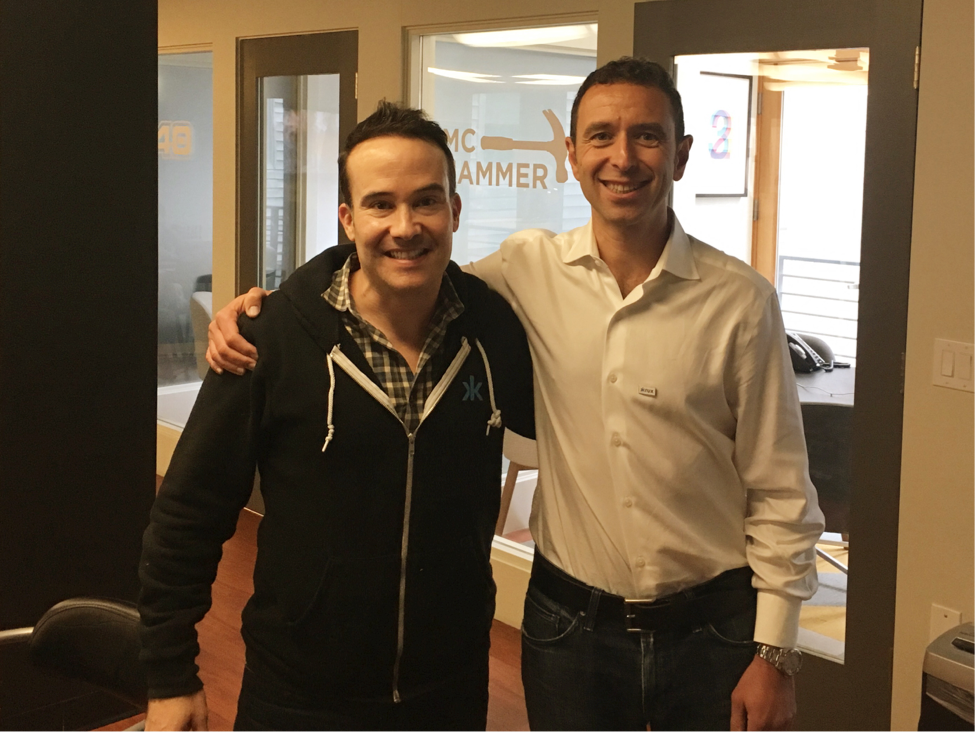
Edge computing has found its way into our tech lexicon over the last few years, and we’re getting a good look of how the edge is emerging with autonomous vehicles and robots in daily headlines. The edge certainly has huge potential, but ask four savvy technologists to define ‘the edge’ and what it means for our computing infrastructure, and you’ll get four very different answers.
So that’s exactly what I did at an MIT NorCal event late last year, where I moderated a panel of founders and product leaders working on the ‘cutting edge,’ including AB Periasamy of Minio, Edward Hsu of Mesosphere, Dana Wolf of Fastly, and Eugene Kuznetsov of Abine and a stealth company (he recently led product at Salesforce).
We dove into an hour-long conversation with these four fantastic participants. The discussion ranged from definitions to predictions, and I think both I and the audience learned a great deal about the possibilities and uncertainties that remain in edge computing.
Below is a condensed version of our talk.
How do you define ‘the edge’?
AB Periasamy: The edge is simply data centers sitting outside the public cloud and located closer to the remote site where you need some computing storage and intelligence. It’s helpful to think of it as a very large cache that can interface with a master data center, where things are constantly backed up to the cloud so you can’t lose anything, but can still provide far lower latency for applications.
Edward Hsu: The edge is a mental construct more than anything. Anytime you are processing data that is not in your core data center and doing it closer to your client, that can be thought of as edge computing. At Mesosphere, though, we don’t really think of it as cloud or edge, instead it’s more about a data center operating system that can handle a global infrastructure mixed with data locality when needed.
One interested anecdote is around how Mesosphere got its start. As Twitter was scaling, one of their first power users was Justin Bieber, who accounted for something like 5 to 10 percent of Twitter’s traffic. Twitter was one of the first companies to offer a real-time service, and every time Justin Bieber tweeted, Twitter would need to deliver the message about 10,000,000 times concurrently. Of course, Twitter would then crash. In order to keep up with that scale they started to look at distributed technologies like Apache Mesos, and those infrastructure and architecture needs spawned a lot of the thinking at Mesosphere and edge computing.
Dana Wolf: Fastly generally looks at the edge as optimizing non-static content. If the user expects a real-time stream of data that is constantly changing, you want that processing done without needing to ping your central cloud and without keeping it overly intensive that it can’t be done close to the user.
Eugene Kuznetsov: I’ve seen two definitions of edge, which is why I think there is this ongoing debate. First, there is the traditional networking definition of edge, known as an edge aggregator or router, which sits outside of the core Internet but also outside your own data center or on-premise farm. It’s essentially a very particular place in between the core network and the LAN. Nowadays, however, everything that is not public cloud is known as the edge. So computers in your car are edge computing. We keep flipping between these those two concepts, but both are very important.
What are some of the current challenges in edge computing?
Edward Hsu: One challenge I see is a lot of companies increasingly trying to take advantage of this “always connected” world we are living in. I will give you a challenge to count how many network devices are in your house. I guarantee it’s more than you thought. I read this report that the average North American home has 15 network devices. I thought that was kind of high and went home and I counted 25. What does that mean? It means that a whole bunch of companies that had no business building software now have to be software companies — but not just any software company with a website, but personalized edge-experienced type software companies.
Dana Wolf: Security. The edge provides more vectors for attack because there are so many instances. The edge must be built with security first in mind at the architecture level. We won’t be able to solve security issues with traditional a firewall mentality. There’s also the connected issue of rolling out updates and maintenance as things move from cloud-central to edge-distributed. It’s an operational and architecture nightmare.
Eugene Kuznetsov: Manufacturing and edge/cloud is very complicated. Stacks and security protocols are outdated. Software and engineering don’t really understand each other. I have a funny story. We were working with a very large European manufacturer – they stood up a data science team very proud of themselves and installed all the latest stuff from Silicon Valley and hired all the data scientists and started analyzing a lot IoT data from industrial equipment. Two years later, the Data Science teams say, “This is amazing! Machine Learning has made a breakthrough! We see almost a linear correlation between the current and voltage going into the motor.” This is what happens in these industrial companies when the software teams are completely separate from building the stuff and undermine their credibility because they don’t understand things like Ohm’s law.
What are some of the use cases of edge computing that people might not know about?
AB Periasamy: Well I find the range of possible edge deployments to be really interesting. Some just started by putting Minio on a Raspberry Pi 64 – these are ARM Processors ($35 computers). Minio ran fine on these ARM computers and had local storage and captured data. Raspberry Pi is not really industrial IoT, it’s just a hobbyist project, but it worked. We’ve seen automotive companies want a central data center of 100 terabytes and then have processing data centers spread across different geographies with 2 petabytes of data in cache. And that’s just an extension of a Raspberry Pi flash as a cache.
Edward Hsu: We have six or seven connected car companies that use us because they are trying to build an infrastructure that can allow cars to talk to each other and do machine learning or machine vision, so they can do autonomous driving. In these driving conditions you don’t have time to ask if that thing I’m approaching at 50 miles an hour is a stop sign or not, and then wait for the data center to tell you. Ideally there has been some machine learning that has been applied and internalized in the car so they can approximate and make decisions on the fly. Those are all examples of edge computing – how much compute power is required to call it ‘edge’ is just philosophical. Most advanced cars today have 100+ microprocessors in them. Cars have more processing power than fighter planes had only a few years ago. Compare all that to Raspberry Pi as a lower range. All of this can be considered ‘edge’.
Dana Wolf: The idea of real-time feedback on applications that have to be so incredibly quick – think of dynamic use cases like customers selecting seats on Ticketmaster while other customers are doing the same. Or, for example, Fastly actually uses edge computing in its messaging, which means we provide an edge cloud platform for our customers to optimize their web experiences.
What are each of your predictions for edge computing in a year and in five years?
Eugene Kuznetsov: In one year we are going to see the major cloud vendors continue to push to expanding their APIs and the software interfaces into what is essentially on-premise hardware. Five years out, we are going to see a lot of friction around lock-in to the public cloud APIs – and a lot of customers are going to find out they are in a IBM mainframes relationship and there are going to be lots of interesting issues arising, possibly even regulatory in nature.
Dana Wolf: In one year we’ll continue to see IoT grow and the network demands from that growth. Five years out, all of that growth will be extraordinarily difficult to maintain and update due to security issues.
Edward Hsu: There are two extreme views of the future. One scenario where open source software is largely not around anymore and all you have are cloud service providers and you have to navigate issues of cloud provider lock-in. The reason why AWS is taking off right now is not because it is super cheap – in fact, there is a lot of data that proves the opposite. What Amazon does is win on making things super easy. If you are a developer who wants a message queue and an analytics engine with a distributed database, one click away and it is there. If I ask my IT department, I have to wait forever. Of course I am going to do this, and my ops guy has to run it. Now our company is stuck on this cloud.
The other extreme is a whole world where people shy away from cloud lock-in and focus on having a platform or architecture that is conducive to open source. For that to happen, though, it means a lot of open source-based startups come together and build solutions that are just as easy as AWS. If people think ahead about the benefits of open source, and find an ecosystem for distributed data technologies and think ahead and use multi-cloud approach we will see a very different future in five years.
AB Periasamy: One year from now, nothing exciting. Everything happening today, just with at greater scale. In five to ten years, though, we’ll see fundamental shift in compute, where machines can finally mimic biological behavior. I’m not talking about consciousness, but the ability to sense things like skin, or for devices to act as eyes and — sensing and learning and acting on those signals in real time.
Alex’s Predictions: Five years from now, Ridge Ventures will have backed multiple founders building successful edge computing companies!



 I’m delighted to announce a new addition to our portfolio:
I’m delighted to announce a new addition to our portfolio: 

